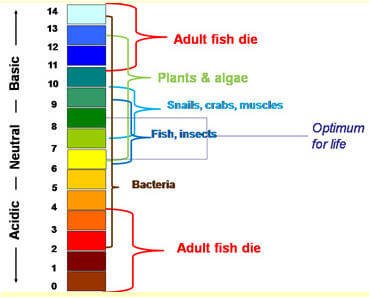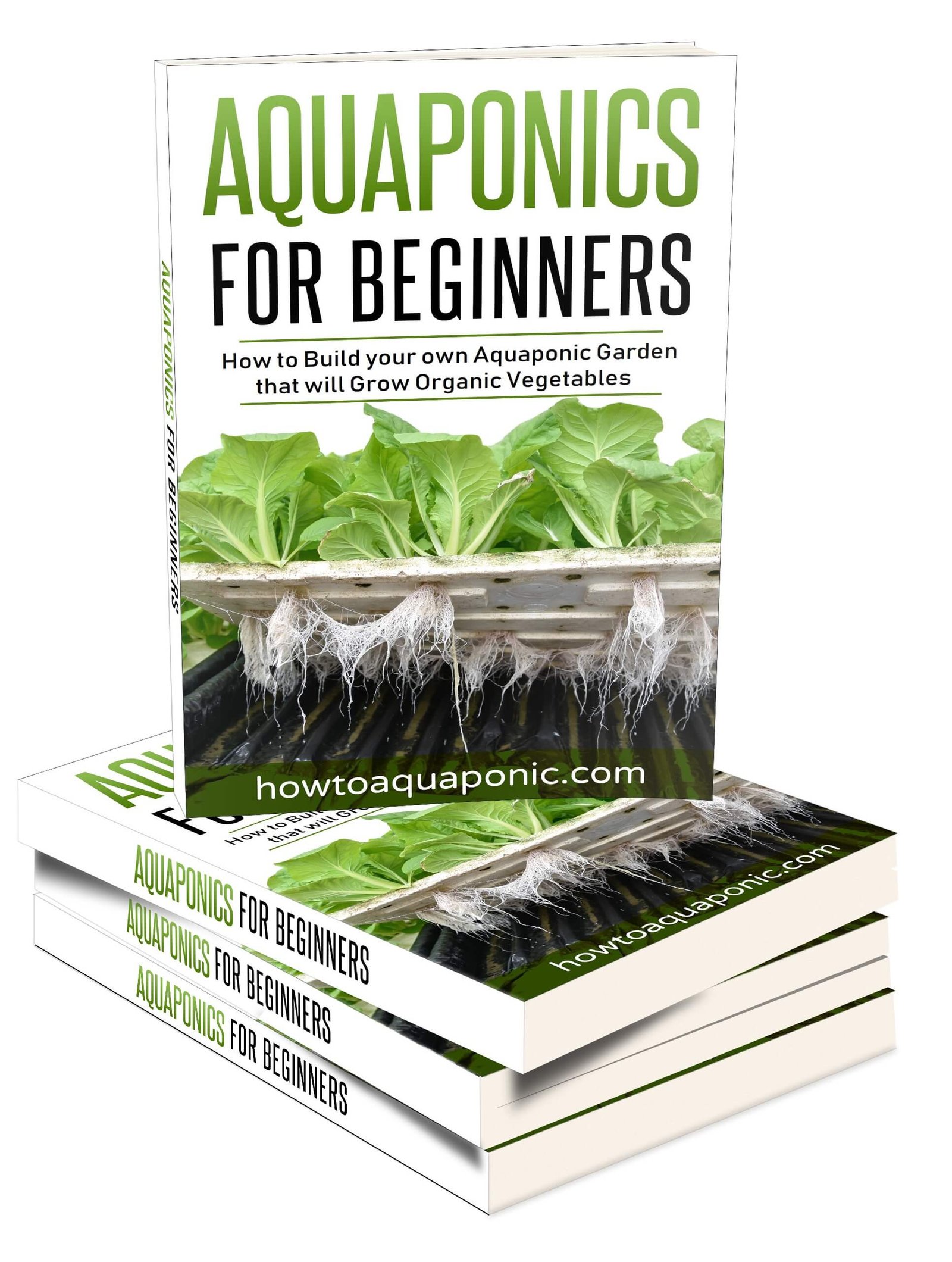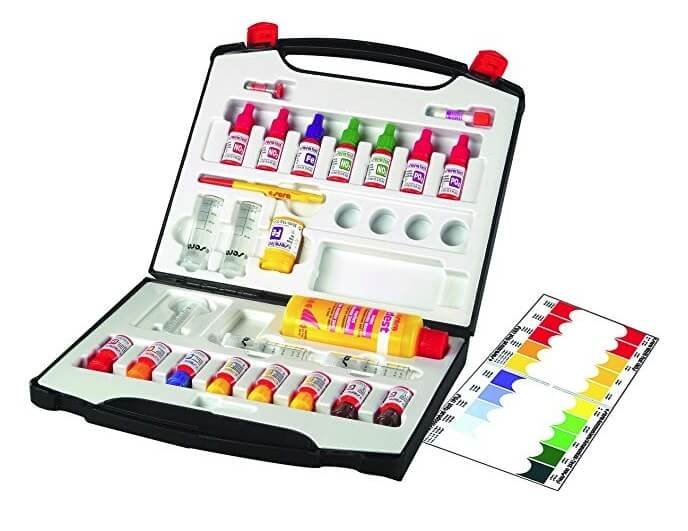If you read about aquaponics you’ll quickly realize that the plants are fed through the waste products produced by your fish. The plants then filter the water and return it to the fish clean; keeping them healthy.
In general, this is a mutually beneficial arrangement. However, this doesn’t mean that the perfect environment is created. This is why it is essential to test your aquaponics system regularly and add any nutrients that are missing.
Adding Aquaponics Nutrients and Testing
Whether you are just setting up or have a well-established system you’ll need to test the water for a variety of different chemicals. You can do this using a variety of testing kits. Any will do as long as you’re looking at the pH levels, temperature, and electrical conductivity.
These three factors can cause the following issues;
Temperature too high or too low
The fish will become stressed and are likely to eat less than they should. This will make them prone to disease and potentially death. It can also cause root disease and slow growth in your plants.
In severe cases, you’ll affect the bacteria that convert ammonia to nitrates; destroying your aquaponic system.
PH Levels Incorrect
Again this will affect the stress levels of your fish causing potential disease issues. Your plants will struggle to absorb the right nutrients resulting in slow growth and, again, bacteria will be killed off preventing the conversion of ammonia to nitrates.

Electrical Conductivity
This can lead to slow plant growth or exceptionally fast growth. Unfortunately, this will reduce the quality of the crop and the likelihood of bolting.
 I have written a book that contains all the information you need to get started with aquaponics.
I have written a book that contains all the information you need to get started with aquaponics.
Don’t be the person that makes painful mistakes during your first aquaponics build!
It has 265 pages filled with information about aquaponics. It’s available in paperback or eBook format.
You can buy it here on Amazon.com
Common Deficiencies
It is useful to know which nutrients are most likely to be missing in your aquaponics. It is worth noting that the type of fish you have and the food you use will affect which nutrients are missing.
The basic principle is that the food they need will be supplied by the fish.
The most important ingredients in your Aquaponics system are nitrogen, phosphorus, potassium, calcium sulfur, and magnesium.
Your plants will also need trace amounts of boron, copper, chloride, zinc, molybdenum, iron and manganese.
Most common deficiencies include:
- Iron – this is easy to spot by watching your new plants. If they have yellowish growth then the system is low on iron. Click here to learn more about iron deficiency in aquaponics.
- Potassium – your plants will absorb this soluble element and use it to regulate the processes going on inside the plant. It is also an essential element in the movement of water throughout the plant. You may be surprised to learn that potassium is also responsible for the process that allows gas to enter and leave the plant.
- Calcium – This essential mineral is part of the plant growth cycle. Without it, the structure of the plant is likely to disintegrate as the water cannot be retained properly. Levels of calcium can be affected by excess magnesium or potassium. When the humidity is high and there is little ventilation your plants may also struggle with calcium even if there is enough in the water. You’ll notice they are not losing water and very little is being taken in by them.
- Phosphorus – A lack of this mineral will cause stunted growth in your plants; especially in the early stages of plant development. The leaves may become darker and even taken on a reddish or purple hue. More worrying is the fact that a phosphorus deficiency is likely to prevent your plant from flowering or even growing fruit or vegetable.

Adding Nutrients to Aquaponics
The method of application depends on the chemical that’s missing:
Potassium
There are two main ways in which to add potassium to your aquaponics system:
- Spray
Use potassium chloride and spray it onto the plants. This is a process that you’ll need to repeat at least weekly.
- Food Additive
The alternative is to add potassium in the food through kelp meal concentrate. Other options include potassium sulfate or potassium hydroxide.
Unfortunately, there is a complication with potassium. The potassium you add is not always available to your plants. Potassium is known to interact with calcium and magnesium; reducing the amount available to your plants.
Therefore to ensure the potassium you supply is used effectively you need to measure the calcium and magnesium levels in your system and ensure they remain balanced.
Calcium
The most effective way to treat calcium deficiency is via a spray. Simply get calcium chloride and mix it with some water. A good starting ratio is 4 teaspoons per gallon of water. You can always increase the dose if necessary.
Then simply spray once a week.
You can also add some shellfish bones to your fish tank; this will also increase the supply of calcium and phosphorous.
Iron
You need to add a form of iron that can be absorbed by the plant. This means using chelated iron; the best one to choose is Fe-DTPA. This will be effective providing your pH is 7.5 or lower; which it should be for healthy plants.
You need to aim for 2mg/liter. Simply calculate the size of your water tank and then add the corresponding amount of iron every 3 -4 weeks.
Phosphorous
This is another essential mineral for healthy plant growth. Again you’ll need to add it in a form that your plants can easily absorb; this will ensure the maximum benefit to your plants.
One of the most common and easiest options is to use rock phosphate. You should be able to pick this up at your local garden center.
The supplement can be added directly to your plant beds; this will allow the roots to absorb it almost instantly. Ideally, the bed should be shaded from direct sunlight to help ensure it doesn’t dissolve before the plant can get it.
You should aim for between 20 and 40ppm for each of your plants.
Summing It Up
The good news is that most aquaponics systems do work exceptionally well by themselves. Iron is the most common mineral deficiency in aquaponics systems.
Providing you monitor visually and via appropriate tests you’ll be able to add the above minerals and help to ensure your plants remain healthy; giving the maximum possible yield from your crop. The most important thing to keep an eye on is your Ph levels. Adding nutrients to aquaponics is only done on large scale operations.

Nick loves building, managing and giving others advice on aquaponics. He created this website to do just that. He is the author of Aquaponics for beginners. If you got a question contact him here or read more on the about page here.
